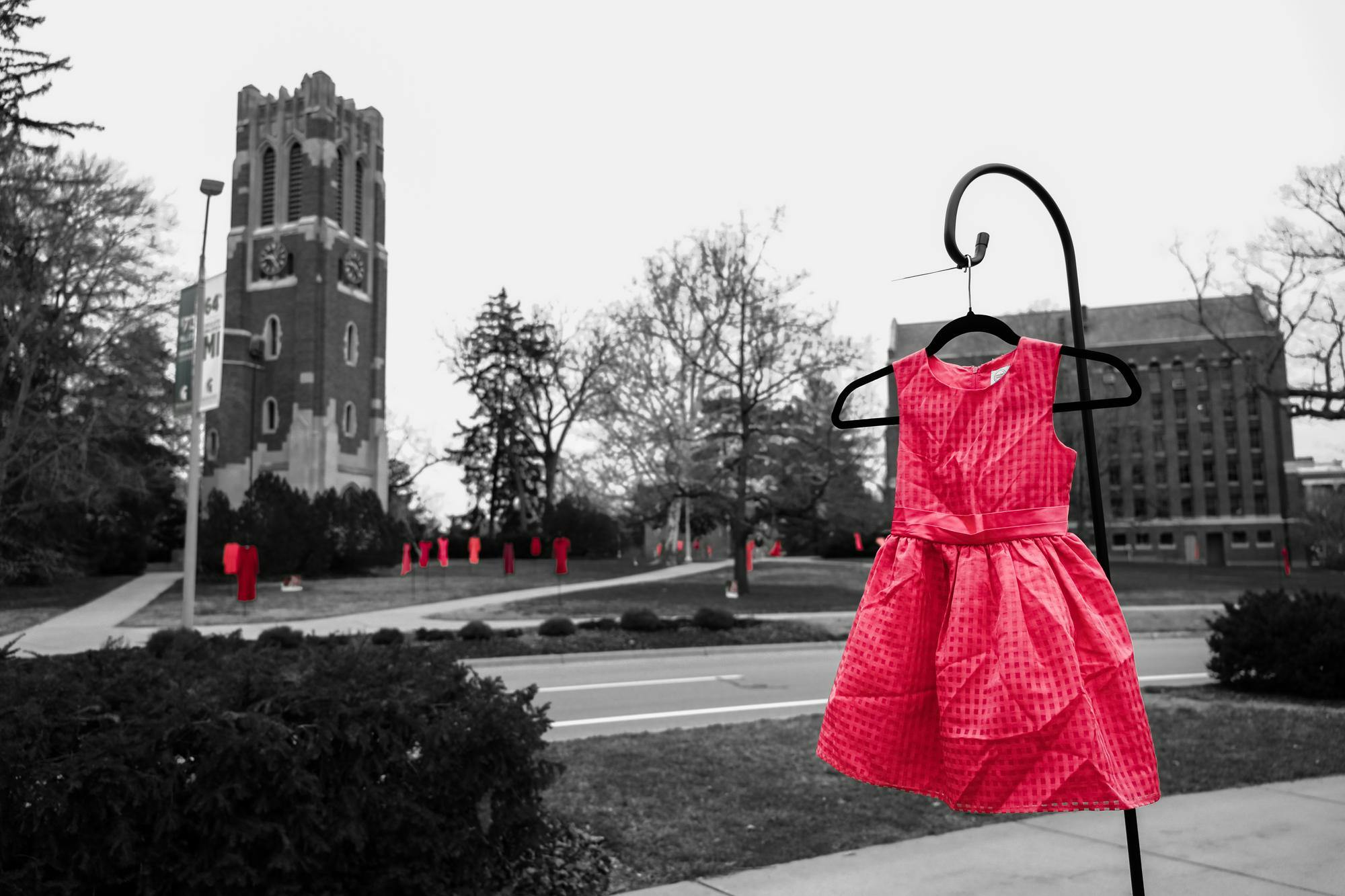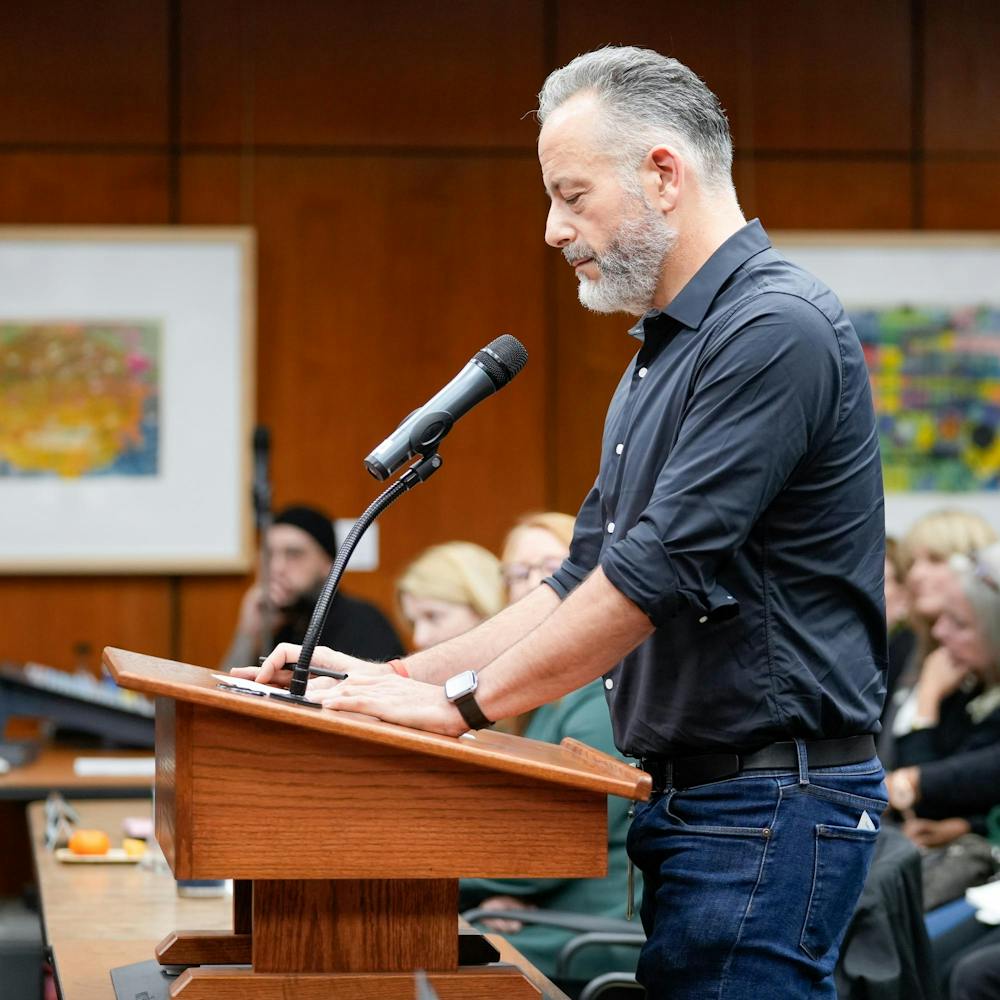In the Beal Botanical Garden, along West Circle Drive and surrounding Beaumont Tower, approximately 60 red dresses without owners hang suspended in the air, each of them representing countless missing and murdered Indigenous women and girls.
The dresses, a combination of dresses from Red River Métis artist Jaime Black-Morsette’s collection and others gathered from Native American communities in the surrounding area, make up the most recent iteration of Black-Morsette’s REDress Project.
Created in 2009, the project is meant to draw attention to the ongoing crisis of violence against Indigenous women and girls across the United States and Canada.
For decades, Native American communities have faced high rates of assault, abduction and murder of community members, with women being the most affected. According to the U.S. Department of the Interior, more than four in five American Indian and Alaska Native women have experienced violence in their lifetime, including more than half who have experienced sexual violence.
"I can’t, even in my mind’s eye, do much more than try to understand the fear and pain that they have to go through," Interim Director of the MSU Native American Institute Kevin Leonard said. "It’s hard for us as Native men, and to a lot of our communities, to see our sisters and daughters and others treated that way."
The installation, brought to MSU through a collaboration between the MSU Museum, Beal Botanical Garden, Native American Institute and other campus partners, is also being used by the museum to commemorate Women’s History Month. Director of the MSU Museum Devon Akmon said he hopes that the installation helps inform and educate students and visitors who may be unfamiliar with the ongoing crisis.
"I suspect that there’s probably a lot of people who are unfamiliar with violence towards Indigenous women and girls," Akmon said. "So first and foremost (it's about) just making them aware of that, and then hopefully reflecting on that and how they can become an advocate."
Black-Morsette said the decision to use the imagery of empty red dresses came after considering the significance of the color red across various cultures. Black-Morsette also emphasized the spiritual element of the color, noting that in many Indigenous cultures, it’s believed that spirits can only see bright colors such as red.
"The color red is a sacred color to so many people in so many cultures all across the world," Black-Morsette said. "It’s the color of life, it’s what animates us, it’s what connects all of us."
Additionally, Black-Morsette said, the display being made up of dresses previously owned and worn by Indigenous women further highlights the profound loss felt by affected communities. Suspended in the air without an owner, the dresses evoke a deep absence while simultaneously asserting their presence by blowing in the wind defiantly, refusing to go on unnoticed by the world.
"Someone used to wear that (dress) and so that spirit and that energy of that person still lives in that fabric," Black-Morsette said. "At the same time that it’s an absence — and it speaks to something violent — there’s also a presence. And I think there’s a real strength in that presence."
While the history of violence and injustice against Native Americans spans the centuries since European settlers began displacing and murdering Indigenous populations, that history also relates to the land MSU’s campus resides on. MSU currently occupies land belonging to the Anishinaabeg–Three Fires Confederacy of Ojibwe, Odawa and Potawatomi peoples, which was ceded in the 1819 Treaty of Saginaw.
For Leonard, that proximity to history adds an additional layer of significance to the installation currently on display.
"This is happening on a campus that has profited millions, if not billions, of dollars over its lifetime on land that was taken from the tribes who lived in this area," Leonard said. "This is important because it’s one more thing that the university is putting their money and their resources and their overall support beyond that land acknowledgment."
On one hand, Leonard said he was glad that the arrival of the REDress Project has brought members of Native communities together under a common goal of awareness. However, he added, he also hopes for the day that the REDress Project becomes obsolete, and the crisis it means to draw attention to is addressed.
"We’re trying so that it becomes so known that our people are not the only ones calling for change, but others start calling for change," Leonard said. "So then in another 10 years, we’re still not having to do this."
Support student media!
Please consider donating to The State News and help fund the future of journalism.
Discussion
Share and discuss “REDress Project installation on MSU campus mourns, honors missing and murdered Indigenous women ” on social media.







